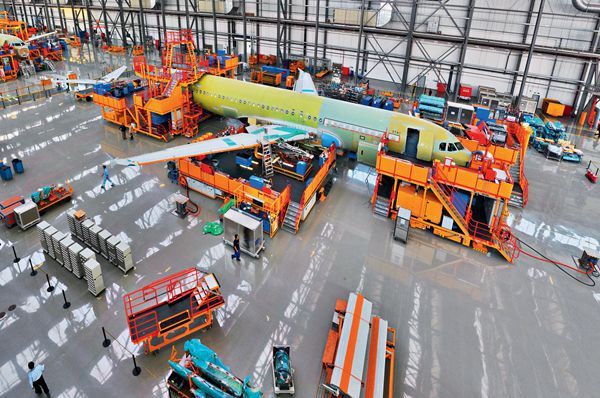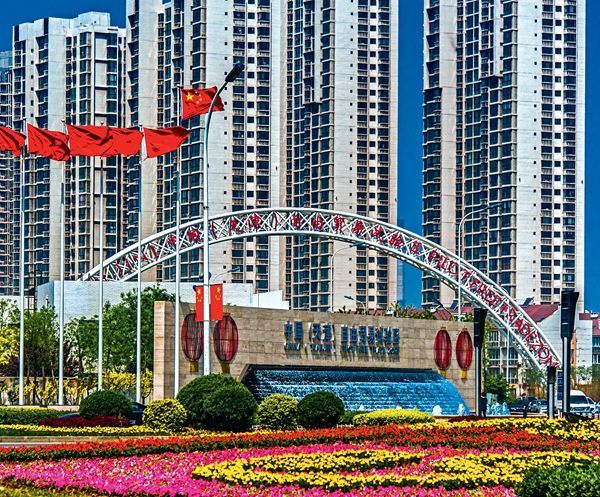Tianjin Binhai New Area: Rising manufacturing center and tourism destination
- By Wu Meiling & Li Zhuoxi
 0 Comment(s)
0 Comment(s) Print
Print E-mail China Today, March 9, 2017
E-mail China Today, March 9, 2017
Global Purchases
The Tmall Global Country Pavilion Experience Center in Yujiapu of Tianjin offers a range of themed products from dozens of countries. As well as satisfying shoppers in pursuit of overseas goods, it also offers a choice of purchasing modes through the new combination online-offline shopping mode.
This abundant selection of European luxury brands helps consumers keep pace with worldwide trends. As a self-confessed foodie, I was dazzled by its array of tropical fruits from Southeast Asia, Australia, and South America. I was particularly tempted by the pineapples from Phuket in Thailand, Australian avocadoes, and guavas from Latin America.
|
The Airbus 320 final production line in Tianjin. |
Most striking was the Bazaar Park, whose design was inspired by the world renowned Grand Bazaar in Istanbul. This 2,500-square-meter indoor market, redolent of Turkish culture and customs, features crafts, gourmet foods, and onsite performances. These include coffee tasseography – Turkish fortune telling from coffee grounds. This fascinating folkway, which is on the UNESCO list of intangible cultural heritage, draws crowds of visitors at the park. I was more drawn to the distinctly rich milk flavor of the delicious dondurma (Turkish ice cream) which took me back to my childhood.
In addition to its space for these smaller items, Yujiapu also includes a parallel import car trade center. On display in its 4,000-square-meter exhibition hall are luxury car brands such as Benz, BMW, and Porsche, at sale prices 10 to 20 percent lower than on the market.
Dagukou Fort Site
Dagukou Port is a must-see for history-hungry visitors to Binhai New Area. Portugal and Spain’s opening of new sea routes to the Far East at the end of the 15th century heralded the global oceanic era. Two centuries later, Emperor Jiaqing of the Qing Dynasty (1644-1911), aware of the strategic position of Dagukou Port in guarding the capital city and as a maritime gateway, issued an imperial edict reestablishing a naval base there. Accordingly, in April 1816, batteries were built along both shores of Dagukou Port.
|
The China (Tianjin) Pilot Free Trade Zone archway. |
The First Opium War (1840-1842) eventually shattered the feudal Qing Dynasty closed-door regime, so influencing the historical course of modern China. In the 100 years after 1840, China’s territory was trampled underfoot by Western powers. Between 1858 and 1860, Dagukou Port was site of three battles, so underlining its strategic position as a maritime gate. In 1900, the Eight-Power Allied Forces attacked Dagukou Port and gradually occupied Tianjin and Beijing. Later, in 1901, the Qing Dynasty signed the humiliating Boxer Protocol. The Dagukou Port batteries were dismantled the same year.
The site today, however, bears no trace of these painful memories. Human recollections have wisely consigned Dagukou Port to history.








Go to Forum >>0 Comment(s)